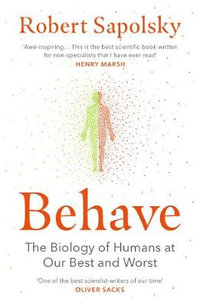How do novel scientific concepts arise? In "Creating Scientific Concepts, " Nancy Nersessian seeks to answer this central but virtually unasked question in the problem of conceptual change. She argues that the popular image of novel concepts and profound insight bursting forth in a blinding flash of inspiration is mistaken. Instead, novel concepts are shown to arise out of the interplay of three factors: an attempt to solve specific problems; the use of conceptual, analytical, and material resources provided by the cognitive-social-cultural context of the problem; and dynamic processes of reasoning that extend ordinary cognition. Focusing on the third factor, Nersessian draws on cognitive science research and historical accounts of scientific practices to show how scientific and ordinary cognition lie on a continuum, and how problem-solving practices in one illuminate practices in the other. Her investigations of scientific practices show conceptual change as deriving from the use of analogies, imagistic representations, and thought experiments, integrated with experimental investigations and mathematical analyses. She presents a view of constructed models as hybrid objects, serving as intermediaries between targets and analogical sources in bootstrapping processes. Extending these results, she argues that these complex cognitive operations and structures are not mere aids to discovery, but that together they constitute a powerful form of reasoning--model-based reasoning--that generates novelty. This new approach to mental modeling and analogy, together with Nersessian's cognitive-historical approach, makes "Creating Scientific Concepts" equally valuable to cognitive science and philosophy of science. "A Bradford Book"
Industry Reviews
"It should be obvious: scientists are human beings and their scientific theories reflect normal human mechanisms of thought, called frames and metaphors by some cognitive scientists and models and analogies by others. James Clerk Maxwell was no exception. His laws of electromagnetism were structured by those forms of human cognition. In Creating Scientific Concepts, Nancy Nersessian demonstrates this beyond question. The book is a tour de force by a great cognitive scientist of science."--George Lakoff, Richard and Rhoda Goldman Distinguished Professor of Cognitive Science and Linguistics, The University of California at Berkeley "In research of major importance, Nancy Nersessian has shown how mental models underlie the creative reasoning of scientists. At the heart of her book is a unique and imaginative use of cognitive science to explain how an incremental series of models led James Clerk Maxwell to his field equations for electromagnetism." --Philip Johnson-Laird, Department of Psychology, Princeton University -- Philip Johnson-Laird "Drawing on years of experience as a founder of cognitive studies of science, Nersessian tackles a fundamental problem neglected by past inquiries into conceptual change: How can a genuinely novel representation be created? This can be done, she argues, by a process of model-based reasoning involving such activities as creating analogies, deploying visual representations, and performing thought experiments. In developing her case she draws on her own "cognitive-historical method" which combines detailed historical analysis with insights from cognitive science. The result speaks to the interests of historians, philosophers, and sociologists of science, and many others, including cognitive scientists."--Ronald N. Giere, Center for Philosophy of Science, University of Minnesota -- Ronald Giere "Drawing on years of experience as a founder of cognitive studies of science, Nersessian tackles a fundamental problem neglected by past inquiries into conceptual change: How can a genuinely novel representation be created? This can be done, she argues, by a process of model-based reasoning involving such activities as creating analogies, deploying visual representations, and performing thought experiments. In developing her case she draws on her own 'cognitive-historical method' which combines detailed historical analysis with insights from cognitive science. The result speaks to the interests of historians, philosophers, and sociologists of science, and many others, including cognitive scientists." Ronald N. Giere , Center for Philosophy of Science, University of Minnesota "In research of major importance, Nancy Nersessian has shown how mental models underlie the creative reasoning of scientists. At the heart of her book is a unique and imaginative use of cognitive science to explain how an incremental series of models led James Clerk Maxwell to his field equations for electromagnetism." Philip Johnson-Laird , Department of Psychology, Princeton University
























